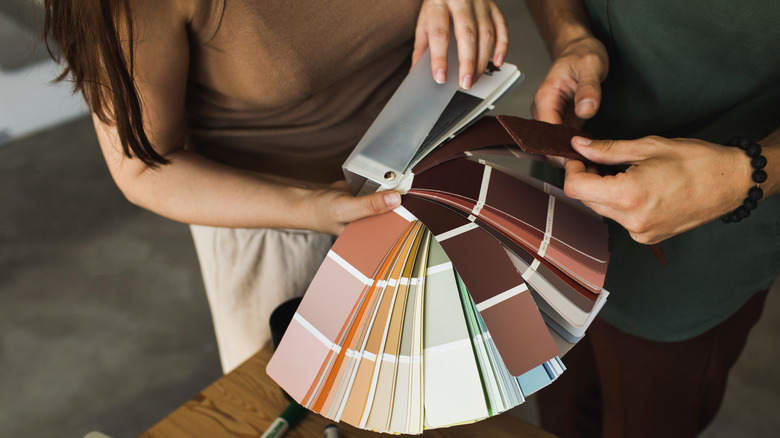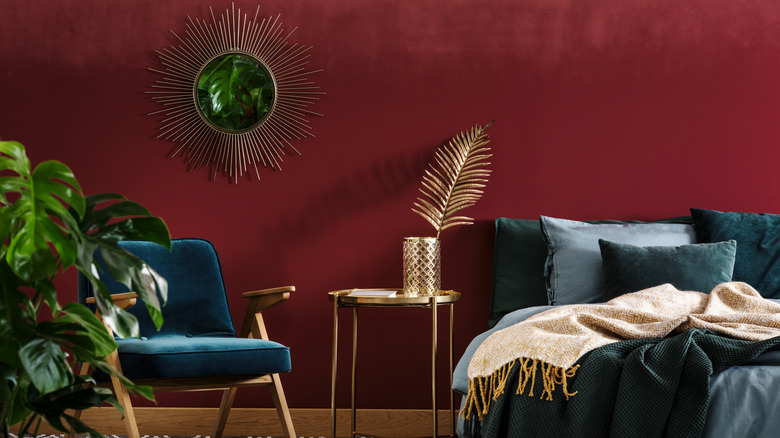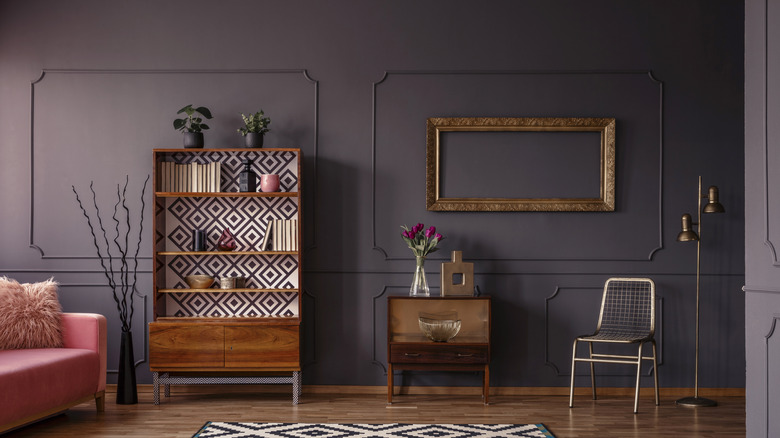Why Berry Tones Deserve A Permanent Place In Your Color Palette
Everyone wants a home that they are proud to show off, but achieving an aesthetic that causes friends and family alike to admire your taste can be a difficult goal to reach. If you've tried the best interior decorating hacks to revamp your space, you might be in search for more inspired approaches to this lofty goal. One of the best tips, although perhaps not immediately obvious, is to embrace berry tones in your home's color palette. While these deep colors of purples, burgundies, and dark blues might not initially seem the most promising, their refined luxury can blend seamlessly with your home for an effect that will truly impress.
If you're craving a wall color that will subtly grab the attention of visitors, berry tones could be the way to go. Their depth of color and the way in which they absorb light ensures that they aren't loud like brighter hues. At the same time, berry tone paints can deliver a degree of sophistication that can be hard to replicate through other means, such as furniture, window treatments, or decor, as you may not be keen on purchasing a deep purple or dark red couch. Berry tones are capable of working throughout the home, so long as you properly balance the intensity of your chosen color with the other interior design features, such as lighting, furniture, and decor.
How to successfully implement berry tones in your home
Berry tones aren't the loudest in the grand scheme of the color wheel; they are, however, not commonly featured as paint colors in homes. Despite being gorgeous on their own, they can be difficult to pull off if your current decor isn't optimized for the addition of such deep colors. Rather than painting an entire living area in a deep berry shade, start small: add in an accent wall or paint a powder room in your desired tone. Experimenting in a limited area with a highly saturated paint color can give you a glimpse of the effect such a shade will have. Once you have established a little more confidence, try out the color in a different space.
When you're ready to branch out and try your paint in a larger area, a study or sitting room is a natural setting, since the dark color will bring an old-world, romantic vibe to the room. These dark colors will work especially well with certain decor elements: various shades of wooden furniture or cabinets, and bronze fixtures like faucets and drawer pulls will blend beautifully with these darker colors. Remember that since berry tones are darker, they will absorb more light — to prevent making a space feel small and dark, ensure that the room you paint has plenty of lighting, natural or otherwise. You can offset some of the intensity of the darker paint color with lighter accents, like creams in area rugs or cushions, too.
Best berry tone paints to consider
If you're new to the idea of implementing berry tones into your color palette, it might be overwhelming to figure out where to start. Berry Bush by Sherwin-Williams is on the lighter side of berry tones and offers a gorgeous shade of deep berry pink, making it a versatile option for kitchens, bedrooms, or living areas. For a darker, more intense shade, Ripe Berry by Sherwin-Williams is a purple hue that can offer timeless beauty to an entryway — pair it with some gold, brass, or bronze accents for a well-rounded visual.
Benjamin Moore also has some impressive berry tone paints to experiment with. Chinaberry is a dusty red shade, ideal for creating a luxurious dining space. For a brighter and bolder look, you can try out Blueberry Hill from Benjamin Moore, which is a highly saturated blue paint. You can paint an accent wall in this color or perhaps a multipurpose space, such as a playroom.
If you're not entirely sold on adopting berry tones in your home, you may get inspired once learning that dark paint colors may fetch you a higher selling price. Remember to follow the best practices for painting your home's interior, including these foolproof tips for painting with dark colors, such as selecting a high-quality paint with the right finish, buying more paint than you think you'll need, prepping the space properly, and applying primer if needed.


